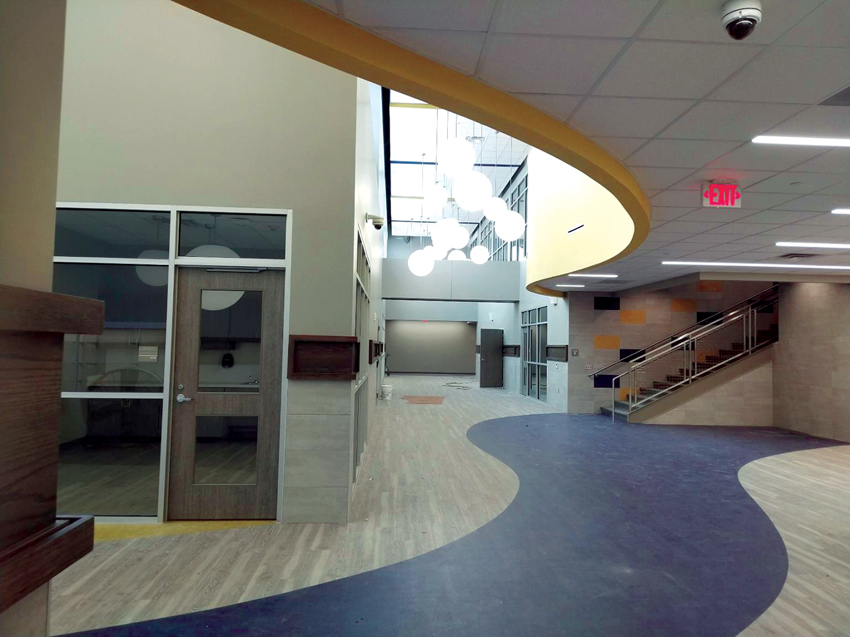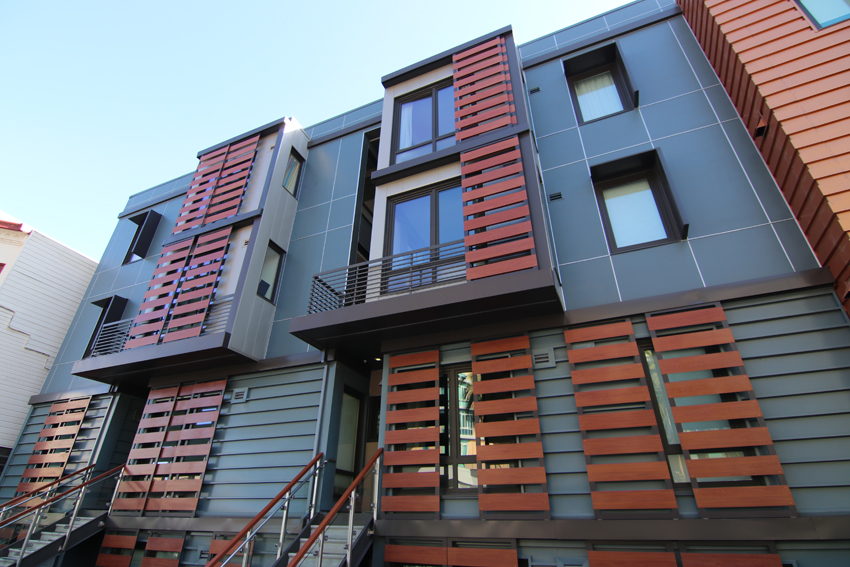Extruded Aluminum Shines in Multifamily and Commercial Building Projects
Working with Drywall in Multifamily Projects
Multifamily residential projects have a unique set of challenges when it comes to drywall interiors. In particular, these buildings are subject to much more wear and tear than single-family homes because of frequent occupant turnover. When tenants move in and out of the units, there inevitably is drywall damage from oversized items that puncture walls, chip corners, damage overhead archways, and otherwise impact the wall surface. Repairing or replacing damaged surfaces can be costly, but leaving them untreated reflects poorly on the overall property. The trick is to design the space with materials that provide modern architectural design aesthetics while accounting for the bumps, bashes, and dents that come with tenants. One area where designers can keep drywall looking good is trim details.
Trim products generally are made of a wide variety of materials depending on the application. Some of the more commonly used materials include polyvinyl chloride (PVC), wood, rubber, and aluminum. Each material has its own advantages and disadvantages, and some trim materials are better for certain applications than others—some are also more costly than others, and so they may not be the best choice for multifamily residential projects. But when it comes to cost-effectiveness and durability, extruded aluminum trim offers a sleek, modern aesthetic that can help multifamily residential projects keep expenses down. We will discuss these qualities in the next section.
As an interior design material, extruded aluminum trim is considered a top performer for many reasons, but particularly because it is lightweight, inexpensive, and looks good. This material is versatile and can be used in place of more expensive metals to provide high-quality details on drywall surfaces that both meet a designer’s aesthetic eye and protect drywall with a strong, durable material. Extruded aluminum is also easy to install, which can drastically reduce project times and costs compared to more custom metalwork.
Light Fixtures
The use of light-emitting diodes (LEDs) has grown rapidly because of the energy use and maintenance costs. The U.S. Department of Energy (DOE) estimated that nearly 50 million LEDs have been installed in applications ranging from indoors to streetlights to parking garages. However, the rise in use of LEDs has created new challenges for lighting fixture manufacturers. LEDs require little maintenance and can be installed in all kinds of dynamic environments, which means that the fixtures must also be easy to maintain and durable.
Aluminum extrusion fixtures have become a solid solution to the challenge. LEDs are cool to the touch within the devices themselves, but they still emit unwanted heat due to inefficient semiconductors that generate the light. Aluminum extrusion fixtures serve as excellent heat sinks while also reflecting more light. In more chaotic environments, such as outdoor settings where they are not sheltered from weather, aluminum fixtures provide a corrosion-resistant alternative to other more costly fixtures.
Design-wise, the flexibility of aluminum fixtures brings more possibilities. The material can incorporate effects like lenses, circuit boards, and end-caps but also allow designers to create fixtures in any shape they desire with almost any artistic style they can imagine. The low-maintenance, high-style quality allows more flexibility both in function and aesthetics. Rather than just being a necessary response to the LED phenomenon, extruded aluminum can be seen as a desirable material for product designers.

Acoustical ceilings created from extruded aluminum can transform a room from bland to modern, like this design in an elementary school.
Acoustical Ceilings
Acoustical ceilings have become popular in all kinds of spaces, including homes, businesses, and schools. On a functional level, they help lower the height of a room and provide better acoustics in spaces that otherwise fill with the din of ambient noise.
On an aesthetic level, they can hide unseemly objects, including pipes and cooling or heating ducts, and are especially good for remodeling basements or industrial settings without a total and costly makeover.
Even though they often are used as a way to fix a space that is unsatisfactory, the possibilities for acoustical ceilings can be transformative in a positive way. With a little innovation and creative design sense, acoustical ceilings can change an otherwise bland room into a modern, artistic sanctuary with an acoustic design that serves the purpose of the room to the highest degree.
The flexibility of extruded aluminum lends itself to a lot of these goals. Extruded aluminum panels, trim, tiles, and other profiles can be utilized in an acoustical ceiling system. As with light fixtures, the possibilities are extensive because the material can be shaped into curves that allow designers to play with the acoustics of a room and provide an aesthetic that interacts with the lighting.
The Allure of Extruded Aluminum Trim
According to Building and Developer magazine, Millennials have become the fastest-growing segment of the housing and rental market, with an estimated 2 million new households peaking at around 40 million dwellings in 2021. With these estimates, building professionals had better understand the wants and needs of this demographic.
So, what are these wants and needs, and how can architects, designers, and developers best accommodate them? And, in the context of this article, what role can extruded aluminum trim play in helping to meet these wants and needs?
While there are many different housing design trends associated with the Millennial demographic, the trends that stand out emphasize small, light spaces that are very flexible when it comes to moving and redecorating and can be used for at-home work. In addition, Millennials value designs that incorporate socially responsible materials and easily foster community gathering opportunities. Multifamily residential projects need to be designed with “out-of-the-box” thinking to creatively meet these needs.
Small, light spaces that are easy to move into and out of—and easy to redecorate—are beginning to define the Millennial design trend of personalization. This often includes custom interiors and may involve mixing and matching decorating styles to get that uniquely designed space. Extruded aluminum trim provides an excellent material to meet this trend, especially in projects with drywall interiors. Designers can achieve an industrial look with clear anodized aluminum trim profiles, or they can use brightly colored trim to highlight a building-wide color scheme in a common area, all within a reasonable budget.
Flexibility does not just lend itself to decorating. Another trend is that living spaces should be functional and flexible, all while providing spaces that make community easy to achieve. Paired with this trend is a modern design aesthetic. In multifamily housing projects, this approach can mean rethinking traditional amenities and spaces both in the individual units and common areas to address the needs of residents who telecommute. For example, individual apartments or condominium units may be designed with defined work nooks or built-in features that double as a desk or counter. Common areas such as a laundry room can be designed to double as a lounge, workspace, or even both. This approach can be used throughout a building, with even administrative areas being used for different purposes after hours, or outdoor spaces incorporating amenities for group cooking and eating with grills and communal tables. Socially responsible, nontoxic materials are in high regard with this demographic, whether used for indoor or outdoor purposes. Aluminum most certainly fits into this category—and it can help achieve a LEED v4 certification.
In terms of urban multifamily residential properties, the Millennial generation is known to be comfortable moving more frequently than past generations. For many, this is simple a necessity: a better job opens up across town, and they want to be able to walk to work rather than drive or commute by transit. Or perhaps a new condominium development is built that is more affordable or has more amenities.
Regardless of the space, the overall look that Millennials value is often clean, simple, and modern. And extruded aluminum trim can provide a design aesthetic—whatever it may be—all while protecting corners and edges from the wear and tear of tenants moving in and out, space sharing (think Airbnb), and residents frequently redecorating to personalize their spaces.

Aluminum lasts a long time before it needs to be replaced, and its light-weight quality and ability to be recycled make it an ideal green building material.









